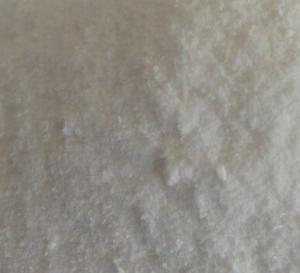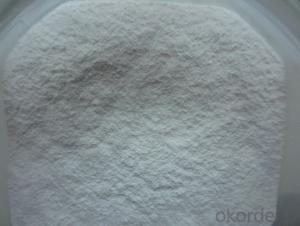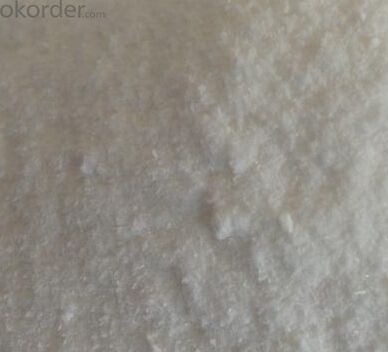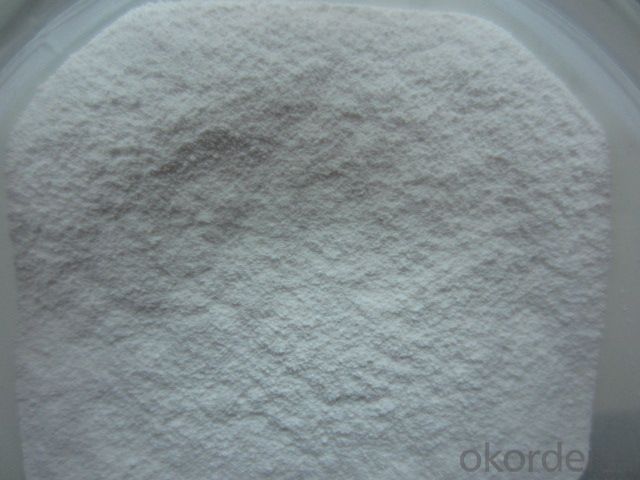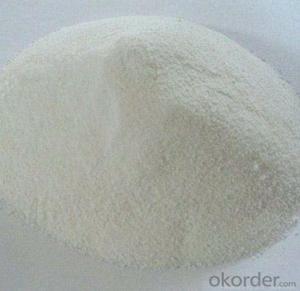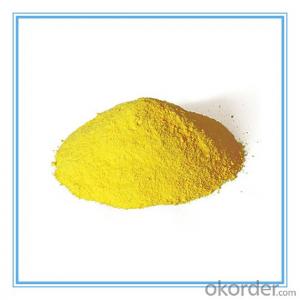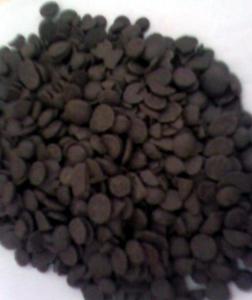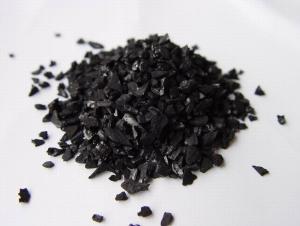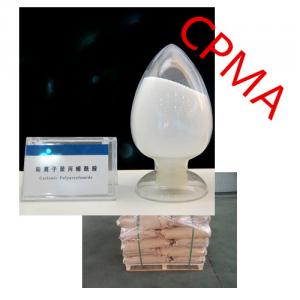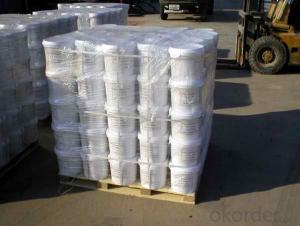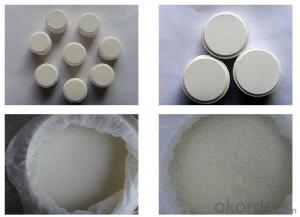Plastic Additives Impact Modifier(A C R),Good Quality
- Loading Port:
- Qingdao
- Payment Terms:
- TT or LC
- Min Order Qty:
- 3000 kg
- Supply Capability:
- 100000 kg/month
OKorder Service Pledge
OKorder Financial Service
You Might Also Like
1. Structure of Pvc Impact Modifier Description
Classification:Chemical Auxiliary Agent
CAS No.:63231-66-3
Other Names:chlorinated polyethylene
Appearance:White Powder
Chlorine Content:35%
Volatiles Content:0.3%
Tearing Strength:8.0Mpa
Elogation at Break:800%
2. Main Features of the Calcium Pvc Compound Stabilizer/Specification
Item | Unit | Index | |
Chlorine content | % | 35±1 | |
Thermal decomposition temperature | ≥ 165 | ||
Volatile Matter content | % | ≤0.3 | |
Remains crystallinity | % | ≤ 5 | |
Tearing Strength | Mpa | ≥8.0 | |
Rate of filtration | 36mesh | % | ≥99 |
Shore Hardness A | ° | ≤57 | |
Apparent Density | g/ml | ≥0.55 | |
Impurity Particle | PC/ 10g | 10 | |
WhitenessR457 | ° | ≥86 | |
| Elogation at break | % | 800 | |
3.Images
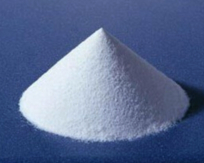
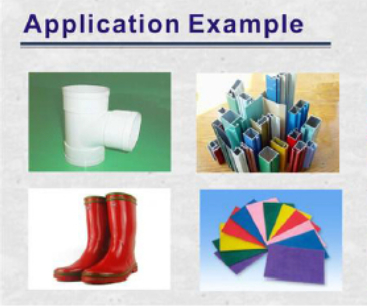
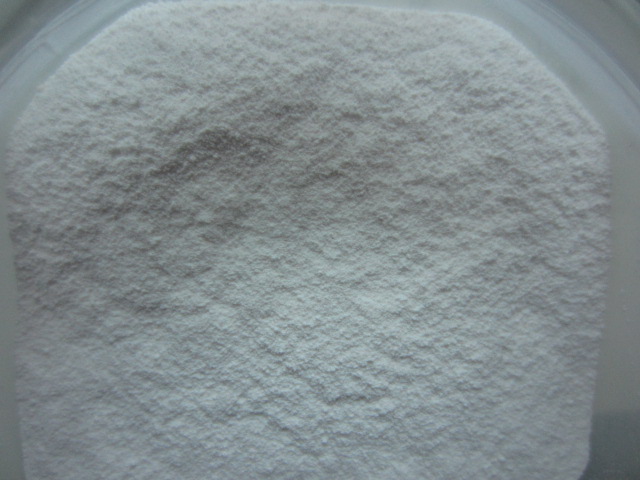
4.FAQ of Pvc Impact Modifier
1.PVC Impact Modifier is Mainly used for producing PVC profiles, U-PVC waterpipe & sewer pipe, cold curved pipe line, PVC blowing board and PVC extrusion board
2.Delivery date:30days
3.Proper for plastic pipe and profile stablizer
4.Payment:30% in advance,70% against BL copy
- Q: What is the superiority of the catalyst compared to the stoichiometric reagent?
- Specificity: an enzyme can only catalyze one or a class of substrates, such as proteases that catalyze the hydrolysis of proteins into polypeptides;
- Q: What is the chemical vinyl chloride and benzene plus catalyst?
- Substituting the reaction to produce styrene and removing HCl
- Q: in acid-catalyzed reaction,there are some books show the acid catalyst as H+ and there are some show it as H3O+ .Are they the same?
- H+ is the ion contained in acids.... When acids are dissolved in water (H+)+(H2O)=H3O+ Both are the same......
- Q: What is chemical adsorption and its relationship with heterogeneous catalysis
- The catalytic cycle includes five steps: diffusion, chemical adsorption, surface reaction, desorption and reverse diffusion.The chemical adsorption is an important part of the heterogeneous catalysis process, and the adsorption of the reactants on the catalyst surface,
- Q: what is the difference between enzyme and catalyst?
- Enzymes and catalysts both affect the rate of a reaction. The difference between catalysts and enzymes is that while catalysts are inorganic compounds, enzymes are largely organic in nature and are bio-catalysts. Even though all known enzymes are catalysts, all catalysts are not enzymes. Moreover, catalysts and enzymes are not consumed in the reactions they catalyze. Catalysts are low molecular weight componds, enzymes are high molecular globular proteins. Catalysts are inorganic, enzymes are organic. Catalyst reaction rates are slower (usually) than enzyme reaction rates. Catalysts are not generally specific - enzymes are VERY specific. Catalysts increase or decrease the rate of a chemical reaction, enzymes are proteins that incrase the rate of chemical reactions & convert the substrate into product. There are 2 types of catalysts - (positive & negative), and the 2 types of enzymes are activation enzymes and inhibitory enzymes. Catalysts are simple inorganic molecules, while enzymes are complex proteins.
- Q: Is there a catalyst for a chemical reaction?
- There may be many, but some of the catalytic effect of the catalyst is good, and perhaps some of the catalyst has not been found
- Q: In the presence of catalyst, KCl is produced in the thermal decomposition of KClO3.You did not have a catalyst. Did you get the same products for this reaction as you would have with a catalyst?
- A catalyst changes the RATE of a reaction, not the products. So, yes, you get the same products without the catalyst as you do with the catalyst.
- Q: In the chemical reaction, the rate of decomposition reaction is related to the quality of the catalyst?
- There are relationships
- Q: I have just spent CAN$550 to replace a catalyst converter at one end of the muffler. The repairman said I need to replace the oxygen sensor very soon, otherwise, the C.C. will be gone again. Is that true... can someone confirm this for me. Thanks.
- The oxygen sensor senses whether the exhaust coming out of the engine is clean of emissions gasses. It can also alter the air-fuel mixture in the engine to run leaner or richer. And yes, it's always a good idea to change the oxygen sensor when changing the c.c. because it can damage the c.c or other components in your engine.
- Q: In biology, the enzyme seems to be a tool for opening a reaction, such as the decomposition of cellulose, such as linked RNA and protein, no enzyme can not. But in chemistry, the catalyst is only a regulatory role, change the reaction rate only. The teacher said that the enzyme is the catalyst. Is there any other effect of the enzyme? (Ignorant high three dogs, you do not spray the big god)
- But let's not say that there is no enzyme or catalyst, the reaction can not be carried out. In the process of random collision of a molecule, the occasional jump of 3 meters is also possible, but the probability is low. From the macro point of view, is the reaction rate is low. So what rate, catalyst, or what xxx let high school teacher how to say, chemical catalysis and enzyme catalysis of the fundamental principles are the same, so you go to college to understand.
Send your message to us
Plastic Additives Impact Modifier(A C R),Good Quality
- Loading Port:
- Qingdao
- Payment Terms:
- TT or LC
- Min Order Qty:
- 3000 kg
- Supply Capability:
- 100000 kg/month
OKorder Service Pledge
OKorder Financial Service
Similar products
Hot products
Hot Searches
Related keywords
